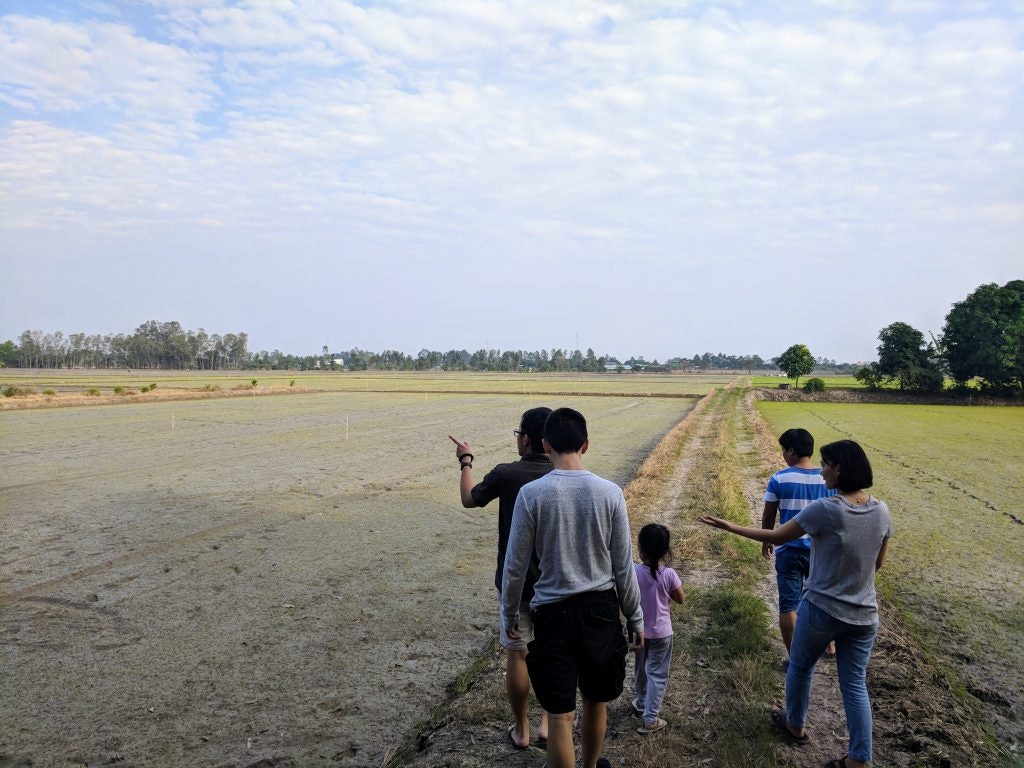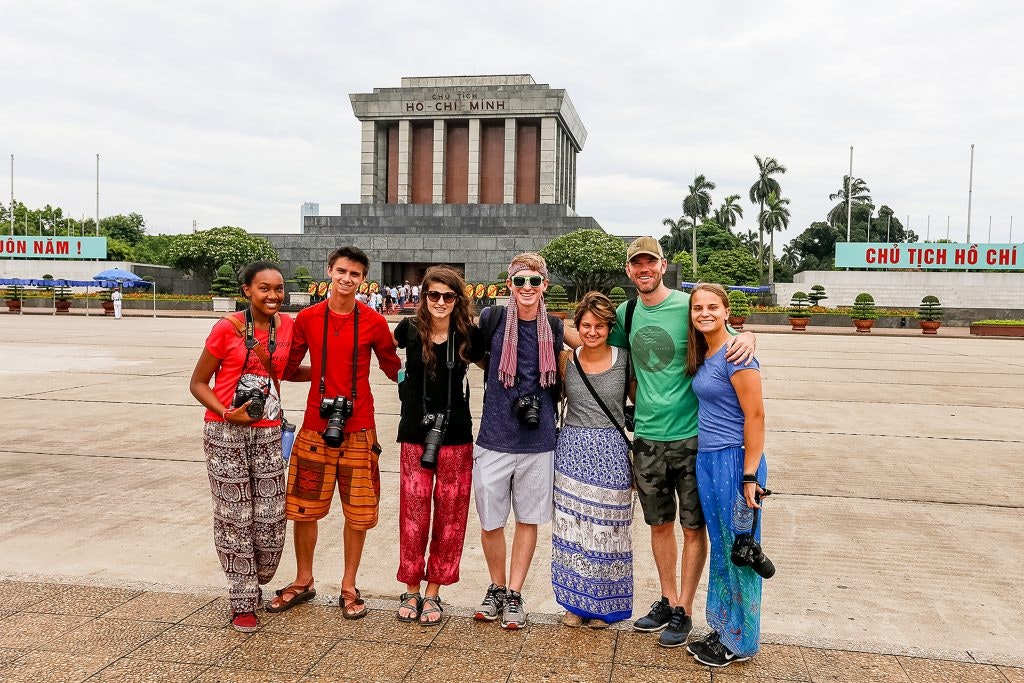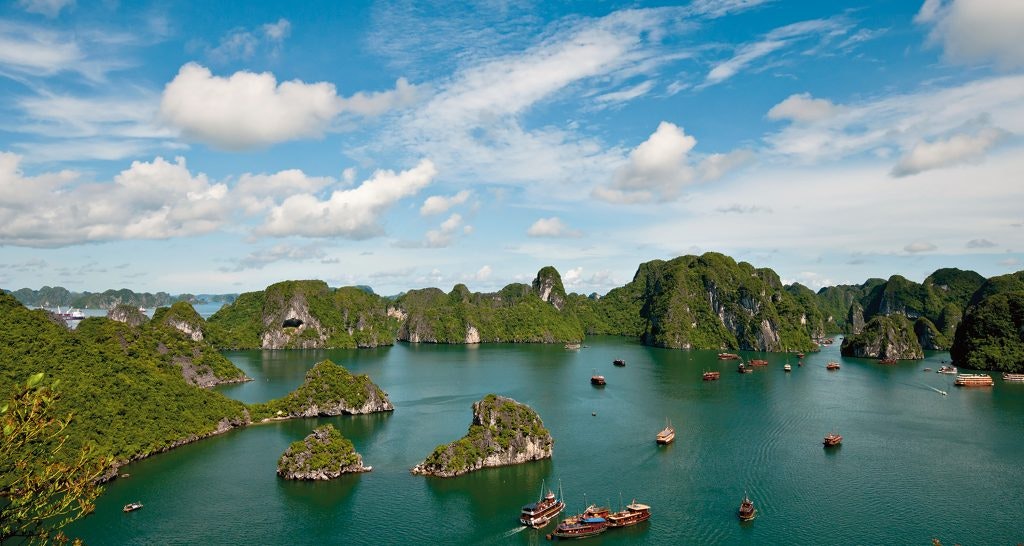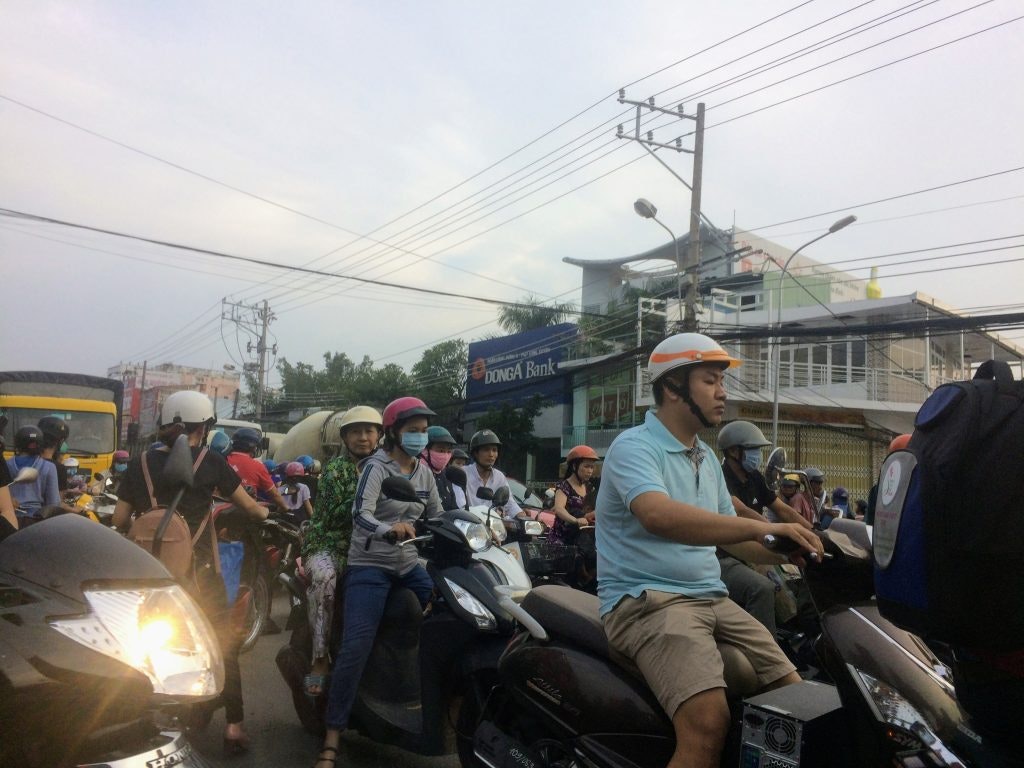Vietnam Country Manager Pannha En says that when you travel to Vietnam, the only way to reach the Hill Tribe villages in the remote regions is on foot. Rustic Students on the Hanoi to Ha Long program enter Vietnam via the international airports in Ho Chi Minh City, Da Nang, or Hanoi. After passing through the Vietnamese immigration office, the students depart (usually from Hanoi) and trek through about an hour of mountain terrain to reach the Vietnamese tribe’s commune. The teens stay there for five nights.
Pannha says it is worth the walk. After traveling south from Hanoi, into the heart of Central Vietnam, it is here where students who visit Vietnam will really see a real Vietnamese way of life.
“This isn’t Ho Chi Minh City. It’s the country. In the village, the people are really happy to see our group,” Pannha said. “I enjoy the views – the farm land and the mountains – and interacting with the local Vietnamese people.”
For Pannha, the stay in this Vietnamese village is the best part of the program. The village has about 200 people who live in homes built on a hill. A number of the structures have bamboo walls and thatched roofs. During service projects, students help with needed infrastructure projects beyond the scope of the Vietnamese government.

Impact of Rustic Pathways Programs that Travel to Vietnam
In past years, people who travel to Vietnam with Rustic Pathways built a pathway and bathroom for the school. They’ve also helped construct a water system for the Vietnamese. When they aren’t working on such projects, Rustic students often will take part in language exchanges where they can teach English while also learning a bit of the local language in return. The teens also can take a break by using a nearby waterfall to cool off while enjoying their meals.
While staying in the Central Vietnam village homes, the students enjoy trying local foods for their meals. They also learn about the local culture, including seeing tribal dances during village ceremonies. It gives them a good ‘taste’ of what life is like for at least one ethnic group in Vietnam.
Behind the Vietnamese Passport: the People Beyond the Vietnamese Immigration Office
There are about 54 ethnic groups in Vietnam. In the village area where the students work, there are a number of Muong people. They are considered the only surviving descendants of the early Vietnamese people.
The Muong in Vietnam have an agrarian society and grow rice on terraced rice paddies, along with raising livestock. They practice animism, which is the worshiping of ancestral and other spirits. Rustic students will learn about these ethnic groups and their culture when they travel to Vietnam.

Rice paddy in Long Xuyên, Vietnam
They’ll also step back in time to hear stories about ancient kingdoms. Students visit the beautiful Ninh Binh province, which once housed the capital of a 10th century kingdom.
Northeast of this area, they also learn about the Tran Dynasty that ruled the region around the city of Nam Dinh from 1225 to 1400. Students explore what was the native land of the Tran Kings, who oversaw a period that was considered the golden age of art and culture.
More recent history will also be on the agenda, as students delve into topics related to the Vietnam War. In Hanoi, they visit the Ho Chi Minh Mausoleum and learn about the life of the former Vietnamese Prime Minister for whom the eponymous Ho Chi Minh City is named. Likewise, they’ll see the POW prison where the late Senator John McCain and other Americans were held by the Vietnamese government. Pannha says this is a great opportunity for the teens. And of course, we cannot forget the amazing street food of Hanoi for the students to enjoy!

Copyright: © 2015 Rustic Pathways
“Students learn a lot in books, but often they never see it in real life,” Pannha said.
UNESCO World Heritage Site…and beyond
These lessons will be taught amid the backdrop of stunning landscapes. This includes the Trang An Landscape Complex, which is a UNESCO World Heritage site. It is an area peppered with limestone karst peaks. Students will ride bicycles through the area so they have plenty of time to explore. Along the way, they’ll see a bird park that is home to thousands of birds.
Rustic students pause from biking in the Trang An Complex Landscape.
Another scenic highlight is the time spent on Ha Long Bay. Students spend two days exploring this UNESCO World Heritage site, cruising on a Chinese junk boat and kayaking. They also visit Fire Island, where they’ll likely see birds, monkeys and antelope.
Overall, the bay has more than 1,600 islets, which are small limestone islands topped with jungle vegetation. Ha Long means descending dragon, which is a name based on a famous legend.

Ha Long Bay in Vietnam
According to the tale, the gods felt sorry for the Vietnamese when they had to fight off northern invaders, so they sent a mother dragon and her children to help. The dragons spat out jade and emeralds as a barrier.
Those jewels became the islets. The dragons were said to take human form to help expand the nation, leading to the belief that the Vietnamese have dragon origins.
Such tales are the basis of a rich storytelling tradition in Vietnam. This comes to life when students return to Hanoi to see a Vietnamese water puppet show. This type of Vietnamese performance dates back to the 11th century. As the name implies, the show takes place in a pool with the puppets supported by bamboo rods.
After watching the show, the students will later enjoy other art forms. They try their hand at pottery and take in the rich architecture in Hanoi’s Old Quarter area, which is the historic region of the city.
Alumna Emma Sharp who traveled with Rustic to Vietnam in 2018 enjoyed these activities and seeing things she wouldn’t have otherwise seen on her own. Along the way, she says she learned many lessons.
“Not only was I shown a variety of amazing sights outside of major cities, I was also given the history and importance behind each place,” Sharp said. “This made my trip very meaningful and I am glad that I got to go on my trip.”
As Sharp notes, this Vietnam program is one that definitely gives students an opportunity to grow while learning – to understand the past while also seeing a different way of living in today’s world. Having these lessons come amid landscapes with stunning scenery certainly is a plus and makes this trip a journey worth remembering.
Your Vietnam Travel Guide
Traveling to Vietnam can be daunting for visitors, but it is friendly for foreigners. Vietnam is renowned for vibrant street food scenes and budget friendly accommodations. Vietnam is a top destination for tourists and foreign employees. Explore the world’s largest cave in the Phong Nha-Ke Bang National Park or the bustling markets of the Mekong Delta. But remember, proper trip preparation is essential for your Vietnamese adventure.

Ho Chi Minh City is unique and fascinating city to explore while in Vietnam.
Visa Requirements and Immigration Procedures
For most travelers, to enter and exit Vietnam requires an e-visa. Apply for an e-visa through the Vietnamese Immigration Office’s online portal. E-visa holders pay a fee, which varies depending on the duration of stay and the visa type.
Make sure your passport is valid for at least six months beyond your planned date to exit Vietnam. If U.S. citizens need an expedited passport assistance, read this article. If you’re already in country, look to the embassy in major cities like Hanoi, Ho Chi Minh City, or Da Nang.
Travel Tips and General Information
Vietnam is affordable for most people. Street food in Vietnam is is affordable and available for most meals.
However, tourists should prepare to spend money wisely, especially in high traffic areas where prices can be higher. Cities like Da Nang and areas like the Mekong Delta are great locations where visitors can enjoy authentic Vietnamese food at a fraction of restaurant dining prices.

Local street food restaurants are where you can find some of the best food in Vietnam.
Safety and Health Tips For Vietnam Travel
Vietnam is safe for travelers; the country of Vietnam reports low incidents of violent crime against foreigners. But, it’s good advice on any trips overseas to be vigilant in public places to avoid pickpockets.
Health-wise, quality of healthcare varies throughout the country. Tourists should make sure to be covered by travel health insurance and bring their essential emergency medications. If you lose your passport, report the incident to the nearest police station and your country’s embassy.

Motorcycles and scooters make up 87% of the vehicles in Vietnam. Take extra precautions when navigating by food.
Exiting Vietnam and Returning Home
Exiting Vietnam is straightforward for e-visa holders, but lines can be very long, so make sure to be prepared. Get your travel documents in order before heading to the airport, the immigration department officers check your passport stamp and e-visa document.
For those staying in Vietnam or on trips where Rustic isn’t managing your travel, you may want to connect with the National Immigration Department in case of last-minute issues with visas.
